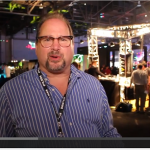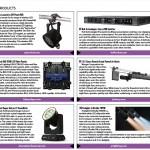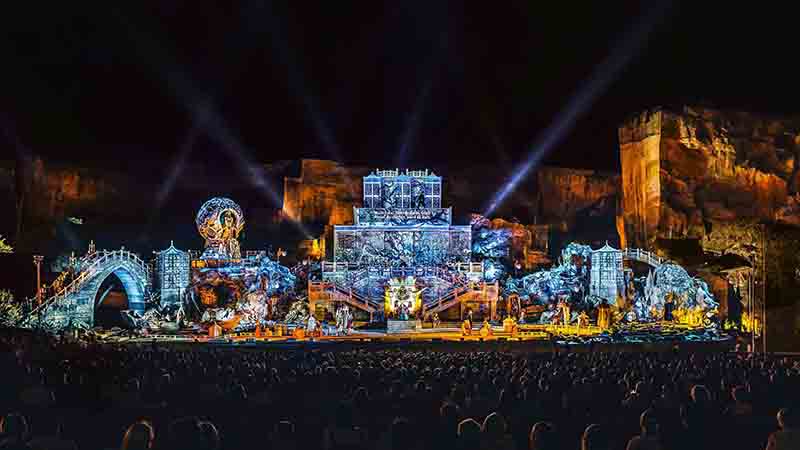
Considered one of the most breathtaking open-air venues for opera, Austria’s St. Margarethen quarry, Europe’s largest natural stage, recently hosted Opera im Steinbruch’s Turandot. Originally scheduled to perform in the Summer of 2020, but delayed due to Covid-19, the classic Puccini opera offered opera lovers—and the theatermakers themselves—a grand opportunity to return to the stage. Directed by Thaddeus Strassberger, the production’s creative team included Media Apparat, who oversaw the projection design; the costumes were designed by Giuseppe Palella; and the scenic design was provided by Paul Tate dePoo III. The lighting design was by Driscoll Otto, stepping in to carry on from the original lighting designer, Jax Messenger who, due to the postponement, was no longer able to light the production in Austria. After the much-anticipated opening, we spoke with Otto about the lighting for this literally operatic-scale production.
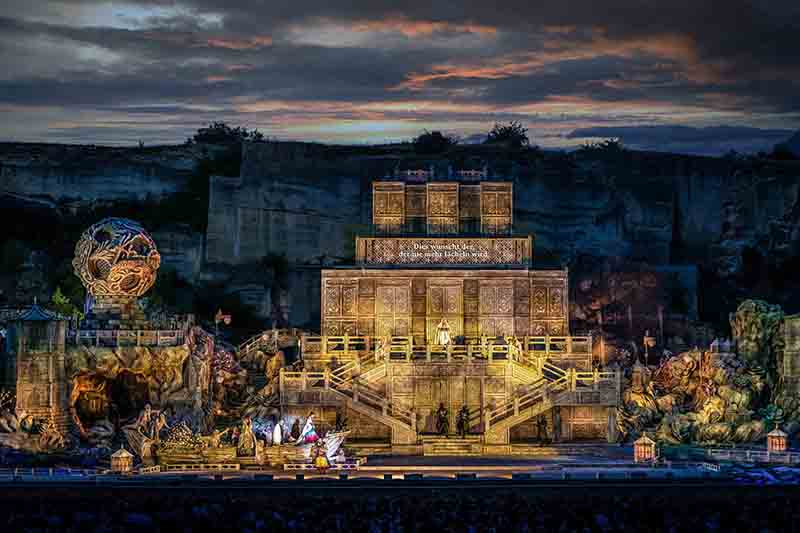
White Light, Daylight, and Projection
Having been brought in late to the creative process, Otto went forward with Messenger’s light plot and equipment choices. “I inherited basically everything, and also quickly realized that video was a big, big, part of the design of the storytelling,” notes Otto. “Being a video designer myself, my first goal was figure out how do I tell the story while also staying out of the way.” Since this was an outdoor venue, they could only work on the lighting at night, so during the day, Otto watched rehearsals on the stage and looked at video content. “It really helped that I was able to see the video and be at a lot of rehearsals. Then I spent my lighting time at night carving people out, and really focusing on how to make things feel seamless between the video and the lighting. There were places that the video ends and we would continue that transition with a softening of edges and continuing of the color scheme. Or purposely blowing things out, so we gradate the image so that people didn’t have the beautiful imagery across their faces. A lot of times I feel like the lighting designer ends up being like a lead storyteller, which I like. I hate to be in reactionary mode, but on this production, because of the circumstance of my coming in to it so late, I had to let the projections lead me. And sometimes, you know, it is nice to be in the backseat.”
In terms of color selection, Otto found that the director had a vision for color—or rather the lack of color—in the lighting. “Color-wise, Thaddeus, very early on, talked about versions of white light, basically a range of 2,700 to 6,500 Kelvin color temperatures. He wasn’t into big colors in the lighting, so we led with that idea of working using color temperatures,” describes Otto. “We had the earlier part of the opera being very warm, 2,700 to 3,000K, so we could pop against the daylight, which was definitely an issue we knew we had to address. You have daylight longer in Europe, the sun was still out for Act One and using our warmer colors right off the bat you could see the difference as people went in and out of lighting. As the opera progressed and we got into Act Two, it became a little more reactionary to the video. We went beyond our basic Kelvin spectrum there because the video was giving our reference whites a much cooler feel. So, it allowed us to go into like a LEE 200 kind of world, which was really nice. I loved those moments.”
Of course, working outdoors in a massive quarry meant working on the lighting mostly at night, which is a bit unusual for opera. A unique challenge that Otto and his lighting team working on Turandot worked around explains Otto, “A lot of times when you light an opera, your lighting sessions are during the day. Which allows you to have access to people to be light walkers onstage. Sometimes it’s patrons of the opera or people from the community; you can fill the stage with humans. When you start lighting a show at 10 or 11 p.m., and we were working until 3 a.m. most nights, you don’t have access to those people as much. So, on this, we lit the piece based on understanding where the principals were on the stage, but then when we got to our first piano tech, and we ran it, it was like, ‘Oh, great! The principals look fantastic, but everybody else is either in the dark or covered with video.’ We did however have more days to light than normal and we were fortunate because that was 10 days before the first orchestra rehearsal. At that point, we were able to look at what we had and come back in our lighting sessions and really fill out the space, based on understanding where people were. That was probably one of the hardest things— never having the opportunity at the lighting sessions to have performers on stage standing where they were supposed to be. Instead, we worked using a lot of recordings of rehearsals or run-throughs, and then sifting through the video to figure out where people were. It was shooting from the hip, hoping that we did it right at 3 a.m. the night before.”
Having the action play out on across the immense set within the enormous quarry, it was sometimes hard for Otto to keep focused as a designer. “It meant that there was a ton to watch out for all the time. When I was watching the main cast, I would totally forget that there was a ninja fight happening on the side of a wall. I would be so focused on the principals that I would look back at a video or get a note that we needed to look at this. I had to be turning my head 75 degrees to catch everything. It was wonderful and difficult at the same time.” Once in Austria, the scope of details to keep track of made Otto glad that when he took over the lighting design from Messenger, he brought NYC-based LD Jimmy Lawlor to be his associate designer. “I sort of surprised everybody by bringing Jimmy, but having not really ever worked with any of the team before or at this theater, I thought that I could use the help. It was great that Jimmy was available, and he was as eager as I was to get out and put up some opera. It was supposed to be me alone, but I brought Jimmy with me, and it was the best thing I could have done. We wouldn’t have been able to get through the show without him. I’m not really sure how other lighting designers at this venue operate without an associate. Jimmy really collaborated with me, and ultimately designed the spots for the show.”
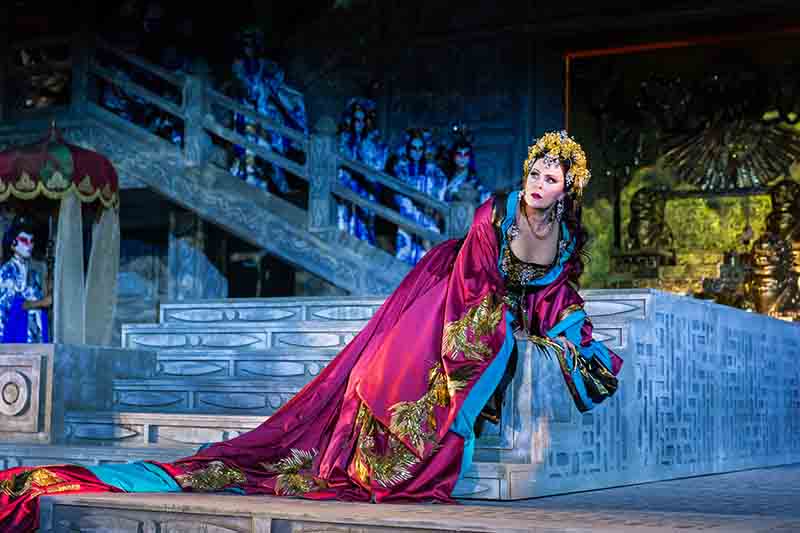
Key Equipment Choices
Among the range of equipment in Messenger’s original plot, Otto found there were some key standouts that worked well in the massive quarry to light the playing area and dePoo’s vast set. “The Ayrton Bora S wash units were my best friend in terms of those long throws when it was just about getting light,” describes Otto. “It’s a good wash unit with a couple of gobos and shutters, so, when it came to someone being on a far, far reaching area, those units became my best friend. We had four front of house towers; basically, two sets of two box boom positions, but they were very far away from the stage. Those positions were filled with Ayrton Khamsin S spot fixtures. The Boras were my people light and the Khamsins were my texture light. The Ayrton fixtures did great, they were fantastic to have. If I needed to shoot across the whole place I wanted the punch of the Boras, but if I needed a really tight spot, the Khamsins were good for that. Then for my lighting positions onstage, we had what we called ‘doghouses,’ basically little huts made to cover the moving lights onstage, and they were integrated into the scenery. The SGM G-Spots were placed all around the set in those doghouses, which gave us some really nice low sidelight.”
As part of the design, Otto also used Litecraft PowerBar X.15 LED strip lights “for my scenery lighting. Truth be told, they were wonderful because they were IP rated, but we did need to work around their dimming curve. They get very steppy as they dim, but fortunately we had this really amazing setup of 18 [Hubbell QL 1505] halogen footlights across the front of the stage so there were several times when we would either blast the set with these footlights, or we would use the texture of light from the Khamsins as we sneaked the LightBars out.” Otto continues explaining more about his onstage lighting choices, pointing out, “The Asteras [AX5, a small LED PAR] were used for scenery lighting as well as for people lighting. They were buried around the set and through the staircases; different areas where it was difficult to get light. We had no overhead positions whatsoever; everything was either from the front of house or from the side. So, when someone was going up one of the staircases, we used the Asteras as low cross light.”
For followspots, the Turandot lighting team used Robert Juliat Cyranos, but due to the fact that the video projectors were in the towers, the followspots had to be located at an FOH position that wasn’t optimal. “The Cyranos from the front of house position were extremely flat,” comments Otto. “There were times if a person was up on the palace, the light was directly in their eyes. The eight projectors took the better position upstairs, but honestly even that position would have been pretty shallow for how far away they were. They’ve put followspots up there in the past, but the towers move a lot in the wind, and I can’t imagine humans up there, nor can I imagine watching my templates bouncing the entire show.” Turandot was run on an MA Lighting grandMA 3 running grandMA 2 software, programmed by Wolfgang Mair. All the lighting and video equipment was provided by Habegger Austria.
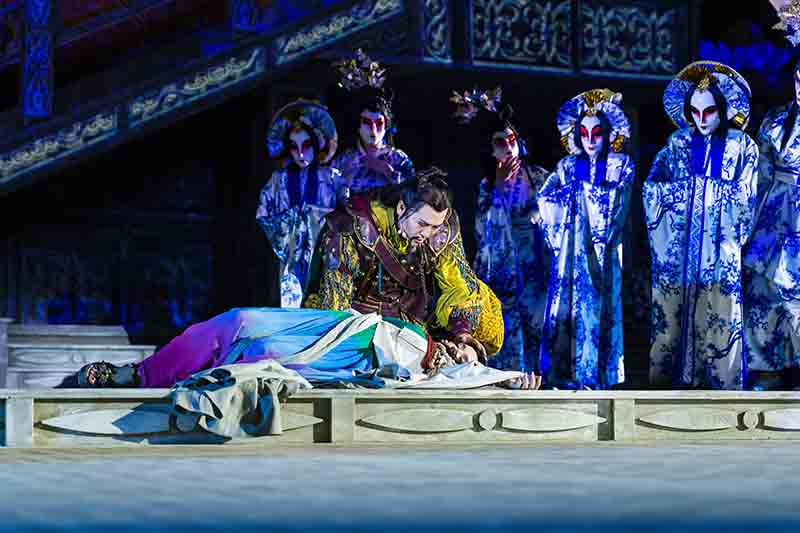
Elated, but Exhausted
Asked what he would tell another lighting designer about working on this production, Otto says, “Working on this production of Turandot was wild. I’d lit a Turandot before and thought I knew what to expect, but this production was really exciting because it wasn’t just the story, there was so much else. There was so much built into the set and the costumes, and what Thaddeus had imagined with the fighting, the ninjas, and all of that. There were a lot of opportunities to be bold and be different. I would think an audience could see this show four times and not be able to see everything that happened. It was very busy, but in a beautiful way. It was like you were at an experience—very immersive. It felt like the audience was a part of the story too.”
As for what it felt like to get to light this production of Turandot on the world’s largest outdoor opera stage, “It was amazing. It was stressful. It was wonderful and it was exhausting at times,” answers Otto. “The company was very gracious and lovely, and Thaddeus was a dream to work with. I had had a few projects during Covid; a handful of little projects, but working on Turandot, that just felt like a real returning-to-work project. After all the long days and hard work, when I look back at the pictures and the videos of the show, I am so happy to be able to look back and say, ‘Wow, that was a great opportunity to be back doing this work again!’”
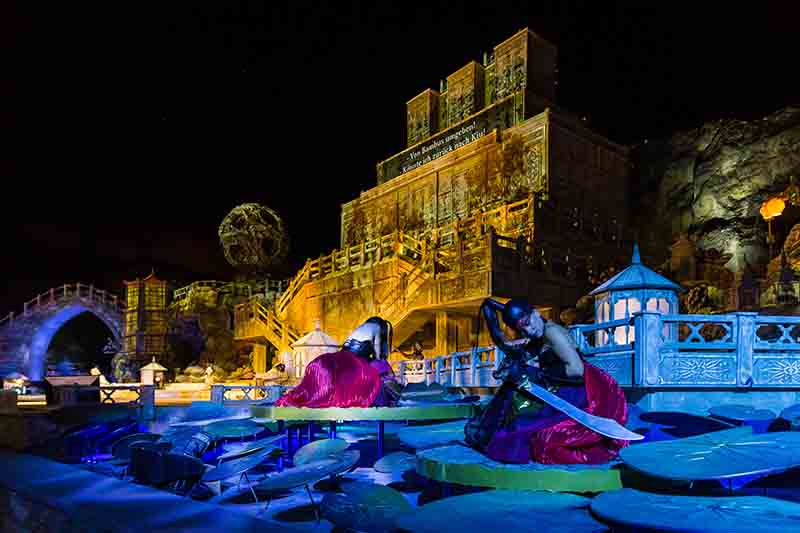
Stage Directions also spoke with the Scenic Designer Paul Tate dePoo III in March 2021 about his career including his work on Turandot for our article Scale, Vision & Meticulous Detail, which you can read online at www.plsn.me/SD_March2021.

